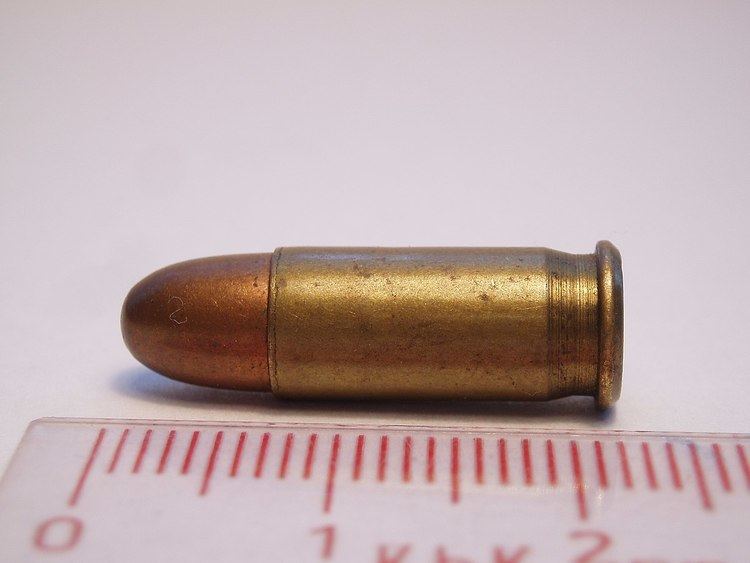 | ||
A full metal jacket (FMJ) bullet is a small-arms projectile consisting of a soft core (often lead) encased in a shell of harder metal, such as gilding metal, cupronickel, or less commonly a steel alloy. In military nomenclature, it is often labeled ball ammunition.
Contents
The use of full metal jacketing in military ammunition came about because of the need for improved feeding characteristics in small arms using internal mechanical manipulation of the cartridge to chamber rounds as opposed to externally hand-reloading single-shot firearms. The harder gilding was less prone to deformation than softer exposed lead, which improved feeding. It is often thought that military use of FMJ ammunition was the result of The Hague Convention of 1899, Declaration III, prohibiting the use in international warfare of bullets that easily expand or flatten in the body, but this only addresses that projectiles must not be designed to flatten or expand, not that they be jacketed. Jacketed bullets had been in use since at least 1882.
In general, a bullet jacket allows for higher muzzle velocities than bare lead without depositing significant amounts of metal in the bore. It also prevents damage to bores from steel or armor-piercing core materials. Historically, the first successful full metal jacket rifle bullets were invented by Col. Eduard Rubin of the Swiss Army in 1882. Full metal jacket bullets were first used as standard ammunition in 1886, for the French Mle 1886 Lebel rifle.
Impact characteristics
By design, fully jacketed projectiles have less capacity to expand after contact with the target than a hollow-point projectile. While this can be an advantage, it can also be a disadvantage as an FMJ bullet may pierce completely through a target, leading to less severe wounding, and possibly failing to disable the target. Furthermore, a projectile that goes completely through a target can cause unintentional damage downrange of the target.
